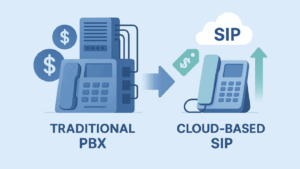VoIP Conventional Wisdom: True or False?
 Don’t worry, this isn’t a pop quiz. We just thought it might be helpful to talk about the things that people often say about VoIP, SIP trunking> and related topics that may or not be true. It’s easy to get confused when you hear different things about a topic that most people don’t think about every day. We’re here to help.
Don’t worry, this isn’t a pop quiz. We just thought it might be helpful to talk about the things that people often say about VoIP, SIP trunking> and related topics that may or not be true. It’s easy to get confused when you hear different things about a topic that most people don’t think about every day. We’re here to help.
The terms VoIP and SIP are interchangeable: False
While the concepts of VoIP and SIP are related, they are not the same. The term VoIP stands for Voice Over Internet Protocol. It is a broad term that covers any phone calls made over the Internet, as opposed to traditional telephone lines. Session Initiation Protocol (SIP) is a communications protocol that is widely used for managing multimedia communication sessions such as voice and video calls. SIP, therefore is one of the specific protocols that enable VoIP.
All VoIP calls sound bad: False
There are many factors that go into the audio quality of calls made over the internet. They include, the tier of carrier, the configuration of the PBX and the presence of Quality of Service (QoS) on the router. Businesses that are concerned with audio quality, choose a SIP trunking provider that leverages a Tier 1 network to ensure both quality and reliability.
VoIP is less expensive than traditional telephone lines: True
When VoIP is achieved using SIP trunks, businesses can save as much as 60% of their communication costs. This is because expensive PRI lines can be eliminated and most long distance charges also go away. In addition, SIP channels are sold one at a time, so you can get exactly the number you need for your business. This is in contrast to PRI lines that are sold only in groups of 23.
Most businesses already have an internet connection that will support VoIP: True
It is likely that the T1, cable, DSL or metro Ethernet internet connection you already have will be sufficient to support both your voice and data needs. We certainly encourage businesses to conduct a free trial of any SIP trunking service they consider.
I can’t use my legacy PBX for VoIP: False
Although most modern PBXs are IP enabled and easily connect to a SIP trunk, even legacy or key systems can be used for VoIP. All it requires is the use of a small, inexpensive device called an Analog Telephony Adapter (ATA).
VoIP is a technical subject and we’ll admit that it is a bit complicated behind the scenes. But that doesn’t mean businesses should shy away from it. You don’t need to be a telecommunications expert to get all of the advantages it offers. When paired with the right partner and equipment, VoIP is affordable, reliable and easy to deploy.


